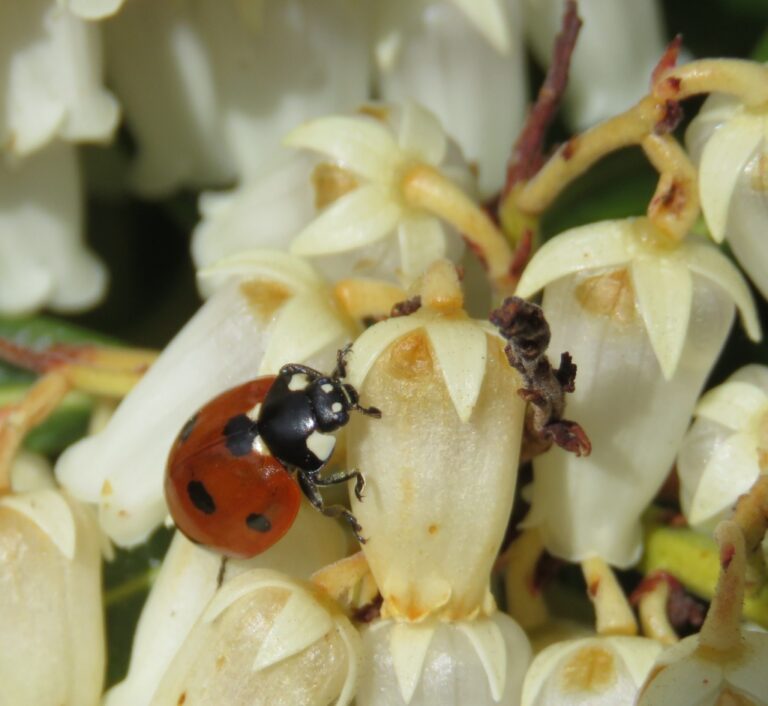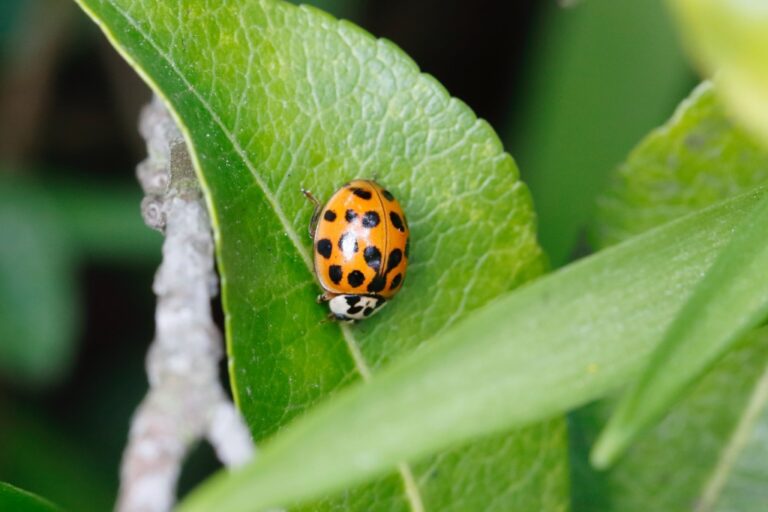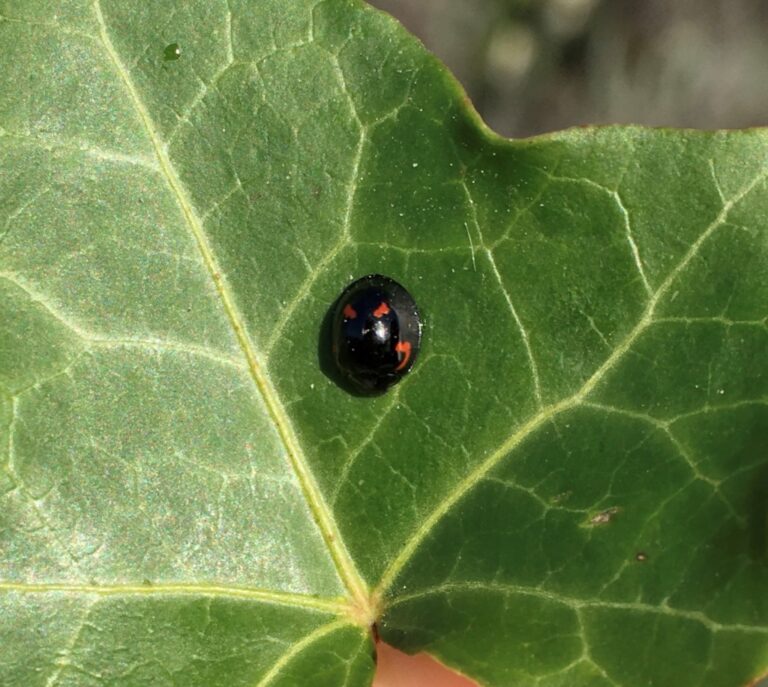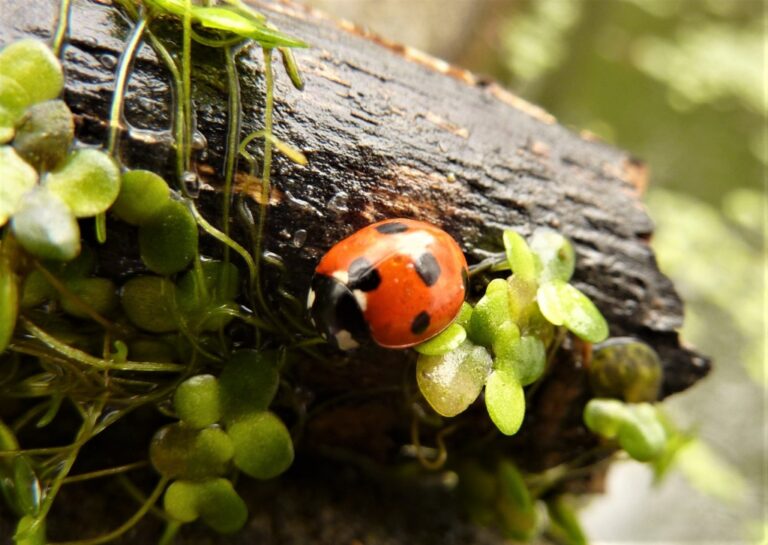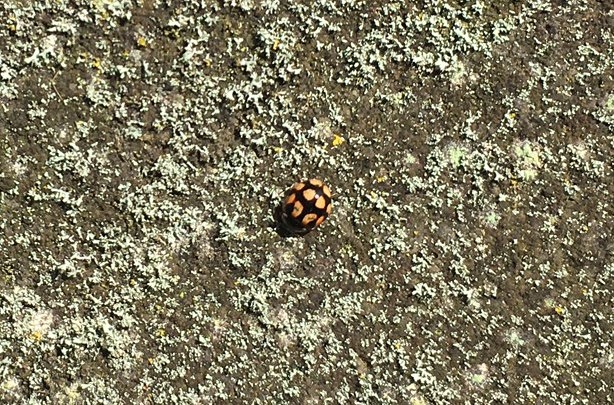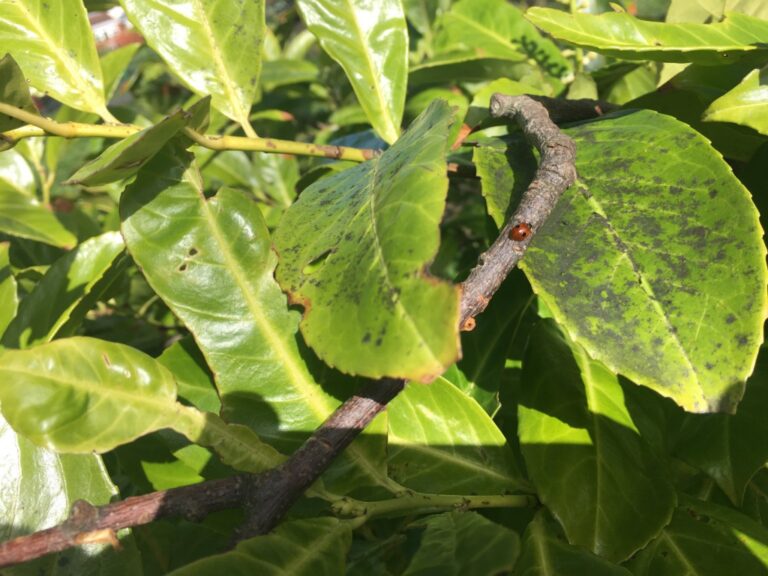Naturalist, David Raffle, examines your observations and discoveries made during week six of the North East Ladybird Spot.
Your ladybird records have been flooding in, with almost 400 records sent in so far in the first six weeks of the NE Ladybird Spot. Ten species have been spotted to date, including eight of the nine target species. The 7-spot Ladybird has been recorded most frequently, with an impressive 147 records of this species. Harlequin, 2-spot, Pine and Orange Ladybirds have also been seen regularly, making up the top five most recorded species. Thank you for all your records so far, and we look forward to hearing about the ladybirds you find in the coming weeks.
Some good places to look out for ladybirds at this time of year include south-facing tree trunks and vegetation, which allows the ladybirds to warm up in the sunshine. Some ladybirds are still tucked away in the nooks and crannies where they overwinter, so having a closer look at fissures in tree trunks, fence posts and even gravestones could reward you with some ladybird sightings. As the weather continues to warm, the ladybirds will become more active and you may find more of them venturing into gardens looking for aphids.
Since the last ladybird spot update, we have received the first records this year of 22-spot and Larch Ladybirds. The 22-spot Ladybird is a small but distinctive ladybird. It has lemon yellow wing cases marked with 22 round black spots. This mildew feeding species can be found on a variety of plants and is particularly common in gardens, grassland and woodland edge habitats.
The Larch Ladybird is a conifer specialist, found primarily on Larch but also on other firs and pines. It is tan in colour, with little patterning other than a dark M-shape on the pronotum. This plain ladybird is less toxic than some of the more conspicuous ladybirds, and instead relies on camouflage to avoid potential predators. The Larch Ladybird is relatively widespread through the North East, so could be one to look out for if you find yourself in a patch of coniferous woodland.
The final target species to look out for over the coming weeks is the 14-spot Ladybird, which becomes active later in the year than many of the other ladybird species. This yellow ladybird can be identified by its rectangular black spots which are commonly fused together to form a shape resembling an anchor. Lookout for this black and yellow ladybird in low herbaceous vegetation, where it feeds on mildew.
Get involved
From the Tees to the Tweed, urban or rural, your records can really make a difference for these iconic insects. There is still much to learn about the North East’s ladybirds and your records can really help to plug gaps and add to our knowledge. Please do share your ladybird sightings with us on social media using the hashtag #NELadybirdSpot and submit your records through the Ladybird Spot recording form.
